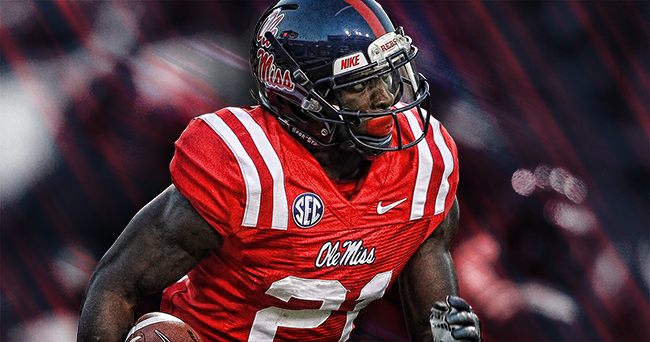Golson's stellar season a product of sophisticated Ole Miss secondary
Senquez Golson leads the SEC with seven interceptions and 11 passes defended in seven games so far this season. Those are incredible numbers, considering no one else in the conference has more than three interceptions or eight passes defended to this point.
But those numbers also seem to be a reflection of how frequently teams throw Golson’s way, allowing him to toy with opposing offenses time and time again.
This all begs the question: Why is Golson thrown at so often, and will teams eventually learn their lesson?
The answer to that question is two-fold.
First of all, teams don’t intentionally throw at Golson as much as it seems. Golson victimizes opposing quarterbacks as a ball-hawk playing in one of the most sophisticated secondaries in the country, benefitting from varying coverages and talented teammates to bait quarterbacks into bad decisions.
Sometimes Ole Miss will line up in man-t0-man coverage. Sometimes it’s zone. Sometimes it’s man disguised as zone, or zone disguised as man. As this Fox Sports article explains, the Rebels present more different looks in the secondary than any other defense in the SEC.
For instance, Ole Miss is one of few teams in the nation capable of running a box coverage, a sophisticated man-to-man/zone hybrid coverage aimed to counter bunch formations. The coverage allows the Rebels to avoid the picks and rubs that come with bunch formations, making it harder for opposing offenses to execute those stunts.
The Rebels change coverages constantly, and as exemplified through their box look they’re capable of adapting their coverages to any situation. Opposing quarterbacks think there will be openings where there aren’t, allowing Golson to make incredible plays on the ball.
Golson still deserves credit for reading the quarterback, identifying his intended target, tracking the ball and making a play, be it an interception or a pass defended. He makes all of that look easy, and it’s certainly not. However, it’s not as though Golson is simply lining up across from the opposition’s best wideout play after play and shutting him down.
He is reliant on the other members of the Ole Miss defense to play their part in picking apart an opponent’s play design, allowing him to make huge plays for his team.
Second of all, teams often throw at Golson when it is advantageous to the offense on a given play. And while offenses complete passes over Golson a few times each game, Golson also makes a few plays he shouldn’t be able to make each game.
He may not be the most dominant cover corner in the nation, especially not in traditional man-to-man situations, but he is one of the best in the country when it comes to making plays on balls in the air. Golson closes ground better than most corners in the SEC, and has impeccable hands most usually find on a wide receiver.
Golson exemplified his playmaking abilities with his game-winning interception of Blake Sims in a 23-17 victory over Alabama earlier this month. The Rebels’ star corner was not in great position to make a play on the ball, as Alabama tight end O.J. Howard positioned himself between Golson and the ball to allow himself an opportunity to make the catch.
But Golson timed his jump so well, he actually made it over the top of Howard (who has a nine-inch height advantage) to pull in the interception in traffic. Sims was right to throw at Golson, picking on the smaller defender in one-on-one coverage down the field. However, Golson’s tremendous athleticism and great hands won in the end, as did the Rebels.
So you see, Golson is far from the best corner in the SEC, despite his gaudy numbers. CBS Sports sees him as just the 21st best cornerback draft prospect in the nation, and project him to be selected in the middle rounds of the 2015 NFL Draft. Many scouts have said they’d like to see Golson succeed more in one-on-one situations, indicating they, too, believe his numbers are a product of the nation’s best secondary.
Teams don’t throw at Golson as often as his numbers indicate, and when they do it’s usually for good reason, or at least that’s how it seems. Golson’s coverage skills are average, but he’s the best in the SEC once the ball is in the air, and his teammates are as good a safety net as one could ask for.
Seven interceptions in seven games is nothing to shrug at, but before we forfeit to the idea that Golson is the best corner in the country, let’s keep all of this in perspective.

